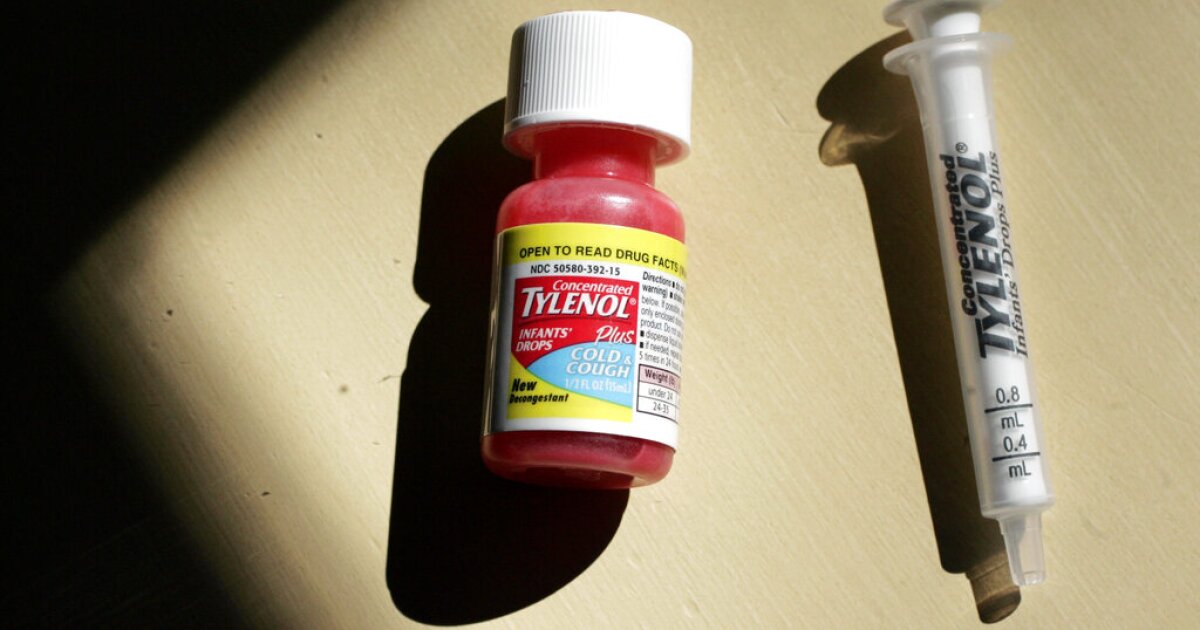

Pharmacies across the United States are struggling to keep medications to reduce fevers and relieve pain in stock as health providers report a surge in infections of the flu, respiratory syntactical virus or RSV, and COVID-19, particularly among children.
Walgreens, CVS, Walmart, and the National Community Pharmacists Association told the Washington Examiner they are working to keep up with increased demand for pediatric cold and flu medications, including children’s Tylenol, Motrin, and Advil.
RISE IN INVASIVE GROUP A STREP INFECTIONS ADDS TO STRAIN ON CHILDREN’S HOSPITALS
Pharmacists are attributing the supply crunch to demand fueled by the trio of illnesses circulating at the same time and are cautioning consumers against stockpiling medications, which could exacerbate supply shortages further.
“We really are in a perfect storm. Right now, the RSV virus, the flu, and COVID, and just a lot of sickness out there. And I think what’s happened is the manufacturers really set their manufacturing volumes on last year, [and] they really didn’t plan to make any more than what they sent out last year,” said John Beckner, senior director of strategic initiatives at the National Community Pharmacists Association, which represents over 19,000 community pharmacies. “There’s been so much more demand this year because of everything that’s going on, they just have not been able to supply it. And it’s gonna take a while to catch up.”
Supply issues aren’t isolated to pediatric over-the-counter medications and are affecting the availability of a number of antibiotics, including amoxicillin and Augmentin, which are commonly prescribed to children with strep throat, ear infections, and bronchitis. Tamiflu, an antiviral medicine to treat and prevent the flu, is also in short supply, per a shortage list by the American Society of Health-System Pharmacists.
Beckner said intermittent shortages of certain medications have forced community pharmacies to get creative, including reaching out to doctors to greenlight switching a patient to a similar medication that is in stock.
Walgreens said it was working with new and current pharmaceutical supplies and distributors to “minimize the impact and inconvenience” for customers. CVS has placed a two-product limit on all children’s pain relief products to limit stockpiling. Meanwhile, Walmart said it is still meeting increased demand by offering several types of pediatric over-the-counter pain medications.
Consumer Healthcare Products Association, which represents manufacturers of over-the-counter drugs, says that supply problems are not “widespread.”
“Intermittent out-of-stocks of OTC children’s pain relievers and fever reducers at certain retail locations is due to the rapid increase in demand driven by an early and severe onslaught of pediatric respiratory cases this year,” said Scott Melville, president and CEO of the Consumer Healthcare Products Association, in a statement. “CHPA is in constant contact with our member companies that manufacture these products, and they have confirmed they are operating facilities at full capacity, 24 hours a day, 7 days a week, to direct product inventory to where it is needed most.”
Melville said that they’ve seen a 65% increase in the number of children’s liquid and solid pain and fever reducers sold this year, compared to the same time last year, citing data from Information Resources, Inc. The association has advised individuals to avoid stockpiling certain medications, which could lead to larger supply issues, and to consider other brands with the same ingredients.
CLICK HERE TO READ MORE FROM THE WASHINGTON EXAMINER
The supply crunch is also being seen overseas. The European Medicines Agency said Friday that it is looking into shortages of antibiotics, with 25 out of 27 European Union member states reporting supply shortfalls, as they deal with an increase in cases of severe group A strep infections, according to Politico.
An uptick in respiratory illnesses has been straining the entire healthcare system. Children’s hospitals in the U.S. have continued to manage higher-than-average volumes of flu and RSV cases, with capacity staying at or near full at some facilities over the past few weeks. Some facilities are now reporting elevated numbers of invasive group A strep infections, a severe and sometimes life-threatening illness that occurs when bacteria invade parts of the body such as the bloodstream.





